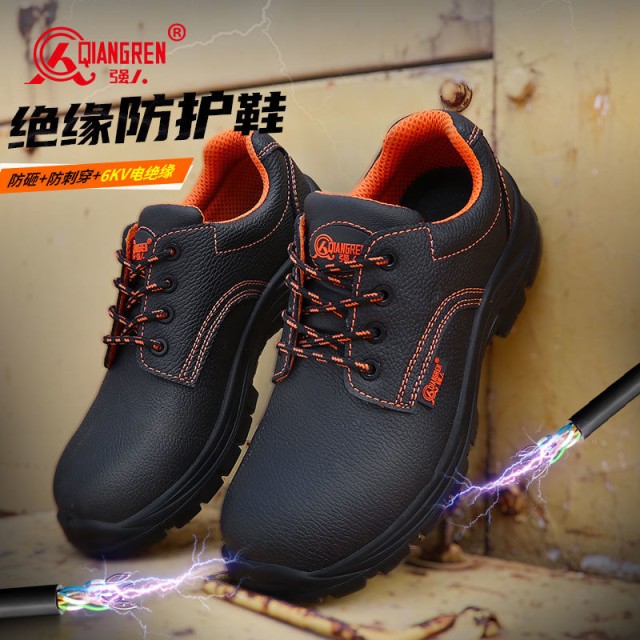Every year, workplace foot injuries cost industries millions in lost productivity and compensation claims—most preventable with proper safety footwear selection. This guide provides a systematic approach to matching CSA, ISO, and OSHA standards to your specific workplace hazards, whether you're managing a construction site, electronics assembly line, or heavy manufacturing facility.
Understanding Safety Footwear Standards
Core Protections: Toe Caps, Metatarsal Guards, and Beyond
Safety footwear is categorized by its protective components, each addressing distinct hazards:
- Toe Caps (CSA Z195/ISO 20345): Mandatory for impact/compression resistance (e.g., ASTM 2413-18 tests for 75+ foot-pounds of force). Required in construction, warehousing, and logistics.
- Metatarsal Guards (M-rated): Shield the upper foot from falling objects, critical in foundries or material handling.
- Puncture-Resistant Soles (S3/S5 ratings): Essential for environments with nails or sharp debris.
- Static Dissipation (SD-rated): Prevents electrostatic discharge in electronics manufacturing or fuel handling.
Key Insight: EN ISO 20345-certified shoes (marked S1–S5) exceed basic "OB"-rated work shoes (EN ISO 20347) by including toe protection and slip resistance.
Industry-Specific Risks: Construction, Electrical Work, and Manufacturing
- Construction: Prioritize CSA Z195 with puncture-resistant soles (S3/S5) and metatarsal guards.
- Electrical Work: OSHA 29 CFR 1910.136 mandates ASTM F2413-18 for electric shock resistance (EH-rated).
- Manufacturing: Static-dissipative (SD) footwear prevents sparks in flammable environments.
Example: A 2021 OSHA report showed 27% of foot injuries in manufacturing resulted from inadequate static control—highlighting SD-rated footwear’s role.
Implementing a Risk Assessment Strategy
Step 1: Mapping Hazards to CSA/ISO Standards
- Identify Hazards: Conduct walkthroughs to document risks (e.g., falling objects, chemicals, live wires).
-
Match Protections:
- Chemical exposure → Acid-resistant soles (ISO 20345 S1P).
- Wet floors → Slip-resistant treads (SRA/SRB ratings).
Tip: CSA Z195’s "M" rating is non-negotiable for industries with heavy object drops (e.g., steel fabrication).
Step 2: Evaluating Compliance with OSHA and Regional Regulations
- OSHA’s Baseline: ASTM F2413-18 is the U.S. benchmark, but some states (e.g., California) enforce stricter PPE rules.
- Documentation: Maintain records of footwear certifications and employee training per 29 CFR 1910.132.
Compliance Gap: Many employers overlook ASTM’s annual recertification—a leading cause of citation during inspections.
Case Studies and Lessons Learned
Construction Site Injury Prevention Through Proper Footwear
A Midwest contractor reduced foot injuries by 40% after switching to CSA Z195 S3 boots with metatarsal guards. Previously, standard toe caps failed to protect against rebar falls.
Consequences of Static Buildup in Electronics Manufacturing
An automotive parts plant faced recurring microchip damage until adopting SD-rated shoes. Post-implementation, defect rates dropped by nearly 60%.
Upgrade Your Safety Footwear Strategy with 3515
As a trusted manufacturer for distributors and bulk buyers, 3515 delivers OSHA-compliant footwear tailored to your industry’s risks—from EH-rated boots for electricians to SD-safe shoes for cleanrooms. Let our expertise simplify your compliance while keeping your team protected.
Act Now: Contact 3515 to request a hazard-specific footwear assessment for your operations.
Related Products
- Wholesale Customizable Suede Safety Boots - Puncture-Proof with Velcro Closure
- Wholesale Durable Camo Canvas Shoes with High-Traction Rubber Soles
- Puncture-Resistant Velcro Safety Boots for Wholesale & Custom Manufacturing
- Customizable Anti-Smash Safety Boots for Wholesale & Private Label Manufacturing
- Wholesale Safety Footwear Manufacturer for Bulk & Custom OEM Orders
Related Articles
- How to Choose Work Boots That Balance Safety, Comfort, and Durability for Your Job
- How to Choose Work Boots That Match Your Industry's Safety Needs
- How Safety Work Boots Engineer Protection: Features and Standards for Targeted Hazard Mitigation
- How to Choose Work Boots That Match Your Job Demands and Safety Needs
- How to Choose Work Boot Materials for Maximum Safety and Durability



















